Budgeted cost of work scheduled is _______________________.
Select the most appropriate explanation for use of a winter/wet weather seasonal calendar for use in this project?
How much Total Float does drafting the product manual have?
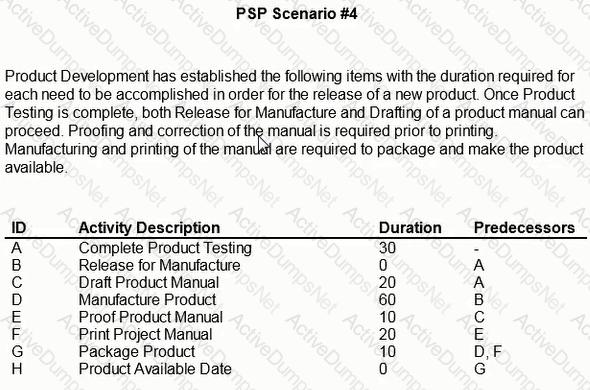
Which of the following types of delay will NOT result in a time extension and additional compensation for a contractor?
Determine the driving activity for Activity 10001.
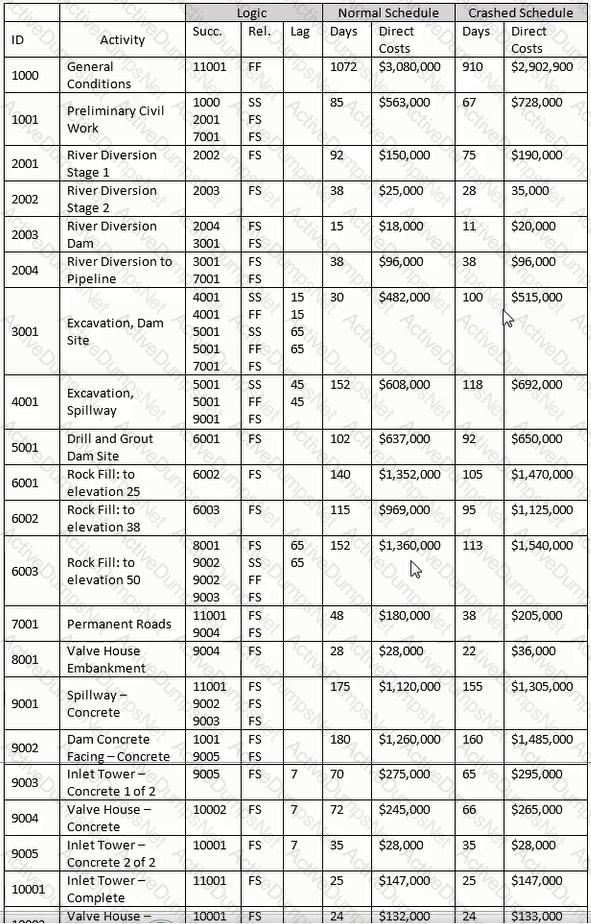
When a fragnet of activities represents a known schedule risk, which activity will most likely change the overall outcome?
What is the remaining work duration of Active D?

What changes to logic would eliminate Activity B from the critical path?
Determine the correct formula and date for the late finish for Activity 2002.
Determine the correct formula and date for the late finish for Activity 2002.
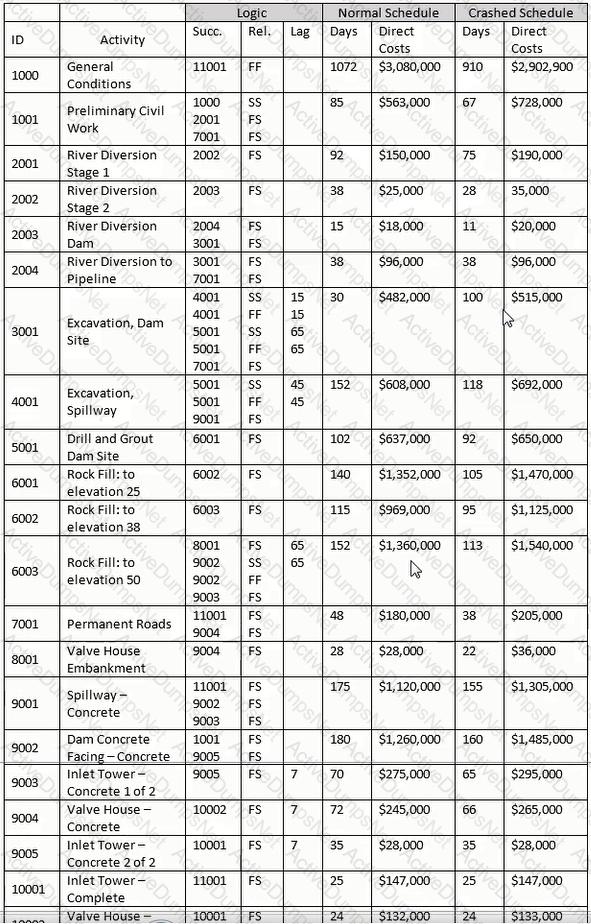
SUBCO is a potential concrete bridge contractor based in a metropolitan area 300 miles away from your project. They have offered to supply manpower and equipment t BILCO at a per diem rate of $3,000 above their direct labor and equipment rates. In doing a cost benefit analysis, which of the following is NOT a consideration?
If a contractor has robust planning and scheduling processes, should those company processes supersede client contract specifications?
At the end of month one, did the delay to the parking structure foundation delay the project?
When are KPIs defined?
STION NO: 146
Using the normal schedule and excluding general conditions, which activities are NOT on the critical path?
The addition of which of the following relationships would cause a logic loop?
What is the free float for Activity F?

Which of the following procedures is generally recognized as acceptable when updating a schedule?
Determine the correct formula and date for the late start for Activity 9001.
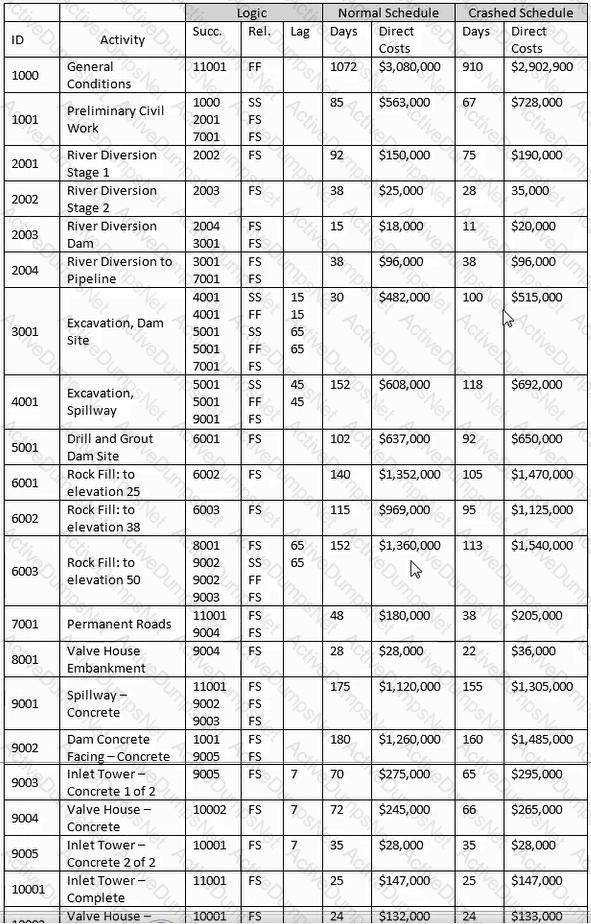
The Cost Estimate is NOT developed to:
What is a critical path method schedule?
NO: 98
The activity with the most total float is:
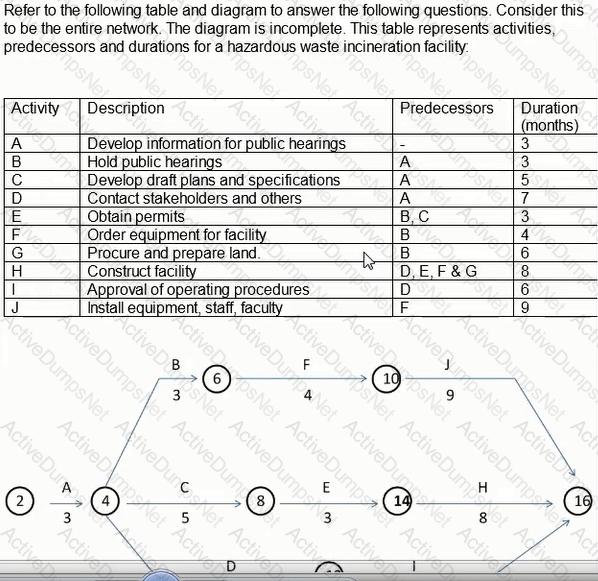
In order for a claimant to be entitled to an extension of contract time for a delay event (and further to be considered compensable):
Project delays are best analyzed
How could the structural steel drawing delay have been prevented?
Using a 1.75 cubic yard [1.34 cubic meter] bucket, how many lifts does it take to pour each 2.000-cubic foot [56.64 cubic meter] column?
What is accurate about Activity 7001 in the precedence diagram?
What was the original planned duration for Activity A through Activity G?

Why does activity 1001 have two successor activities?

For activity 11001. why would the crashed direct cost be greater than the direct cost of the normal schedule?
A good change management plan___________.
Which of the following options is NOT a feasible method to reduce the overall completion time of the toll road program?
The Work Breakdown Structure (WBS) is established to reflect the:
Assuming a total of 30 lifts per crane per day, what is the maximum number of lifts that could be accomplished using 3 small tower cranes over a 5-day period?

Baseline schedule can be submitted only__________.
Using the crashed schedule, if you start Activity 2002 on 12 August 2021. what is the finish date for Activity 2002?
What is the primary difference between the arrow diagramming method (ADM) and the precedence diagramming method (PDM)?
Using the "normal" schedule, theoretically construct a hammock for activities 2001 through 2004. What is the duration of the hammock?
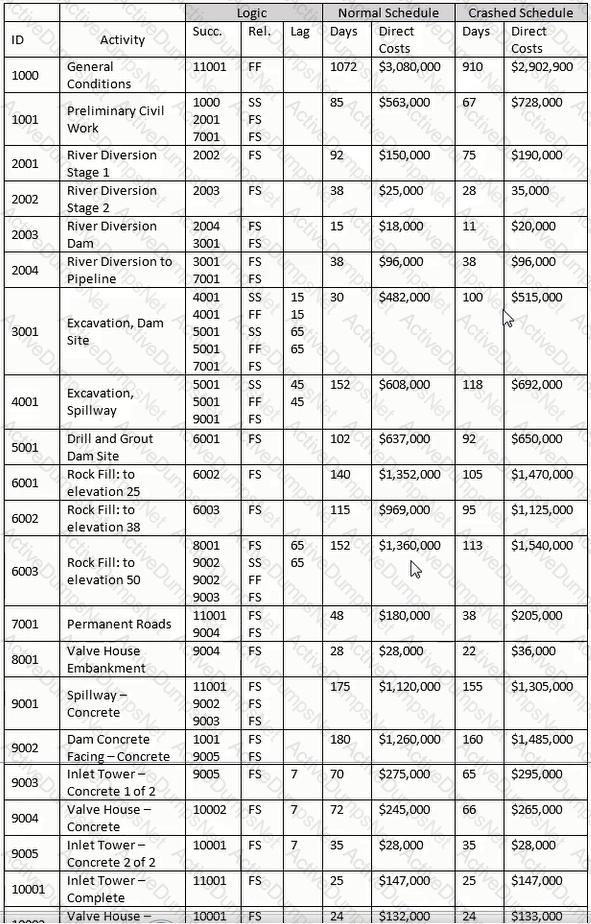
Theoretically construct a summary activity for activities 6001 through 6003. Identify the governing predecessor and successor activities for the hammock:
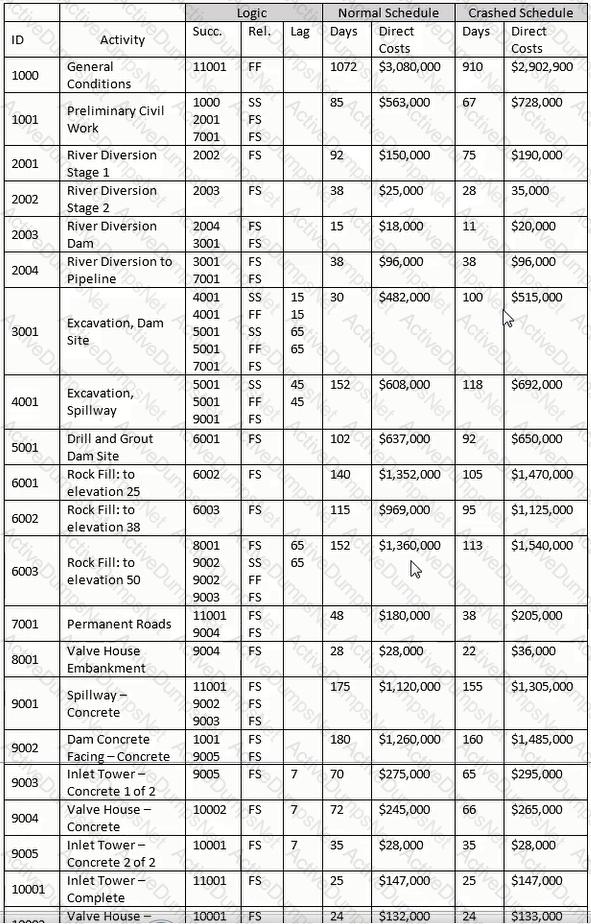
Of the following update procedures, which is the least important in achieving an accurate forecast for completion of a construction schedule?
Schedule forecasts are periodically conducted to project the project schedule performance at completion Which of the following situations would probably result in an incorrect forecast?
Which of the following will always describe the critical path? The path with
Assuming that you had only one crane capable of 30 lifts per day, 3 column pours requiring 28 lifts each, plus associated assorted work requiring an additional 150 lifts, what is the minimum planned working duration for this work?

Which of the following is NOT required when initially planning a project?
Each of the following accurately describes total float in a schedule EXCEPT:
The expected remaining cost needed to complete an activity, group of activities or the project is the____________.
How many entities/subcontractors should a scheduled activity cover?
There is only enough room for a maximum of 4 cranes to be placed on-site. Assuming that a single crane can perform 35 lifts per day and that a column pour requires 60 lifts, what is the minimum number of tower cranes that should be used for the above described column pours?
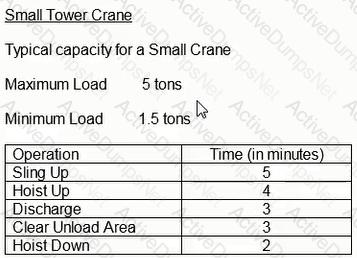
In analyzing a logical chain of activities in a critical path method (CPM) schedule, what do differing total float values within that chain typically indicate?
What day would Activity C complete if the duration of Activity B was reduced to zero?
The primary determination of schedule detail is:
What owner action could have mitigated the late completion of the project?
By subtracting a measured unit productivity rate during an impacted period from the unit productivity rate during an unimpacted period, the resulting value represents:
Using the normal schedule, theoretically construct a hammock for activities 6001-6003. What is the duration of the hammock?
Scenario:
The entire network consists of the following activities and relationships. Activity A is twenty days long and is tied to Activity B, a ten-day activity, with a finish-to-finish tie with a lag value of five Activity B is tied to Activity C, a twenty-day activity, with a start-to-start relationship with a lag value of five.
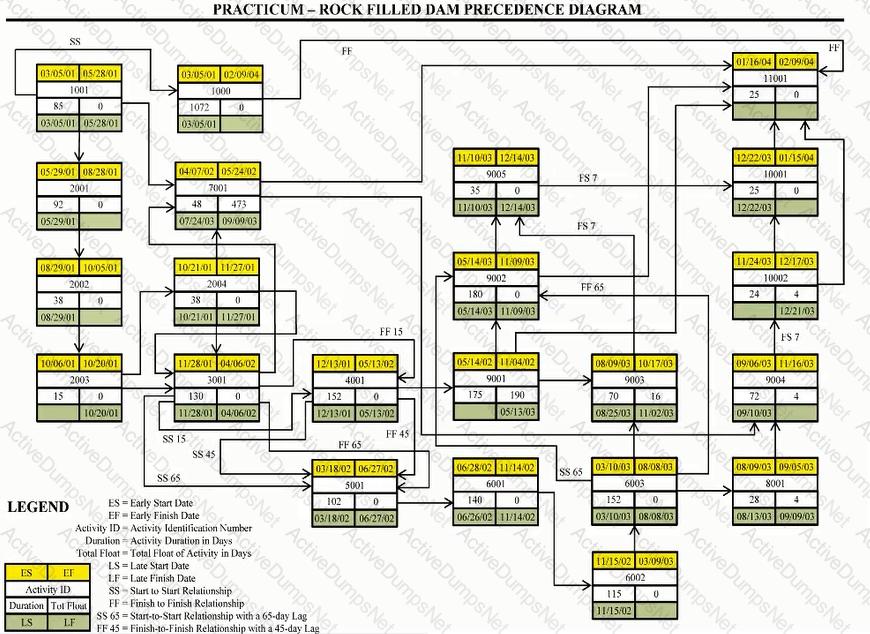
PSP Activities Table
Scope Known about Rock-Filled Dam Project:
The dam requires river diversion and work over two or more rainy seasons. The contract is lump sum, competitively bid, and will be self-performed. The owner has attempted to shift all risk to the contractor by employing "no differing sit conditions" and "no damage for delay" clauses. There is a bonus/penalty provision of $2,500 per calendar day for early or late delivery. The early completion bonus is capped at $500,000, with no cap for late delivery penalty.
Liquidated damages end at the finish of demobilization. Indirect costs per calendar day are $2,800 for the "normal" schedule and $3,200 for the "crashed" schedule. The winter/wet weather season is 151 days between October 15 and March 25 of each year, reduces the efficiency of the contractor's operations by 20% and costs the contractor $10,000 per day. Assume a start date of March 5, 2001 and use a 7-day work week.
The following table lists work activities as planned by the contractor.

Theoretically construct a summary activity for only those activities with a finish-to-start relationship for Activities 8001 through 10001. Using the "normal" schedule, what is the cost of this hammock?
Using the normal schedule, what is the owner's total cost of the project?
Due to a testing delay, release of the product for manufacture is delayed by 5 workdays and the product manual misses its print window at the printer. If the printer is delayed by 10 workdays, what is the delay to produce release?
Assumptions made during the planning stage should be_____________.
Which of these letters, symbols or words best approximates the graphical shape of a project's cumulative BCWS?
Total float is defined as the amount of time an activity can be delayed without impacting
What does the heavy, vertical line at "X" represent?
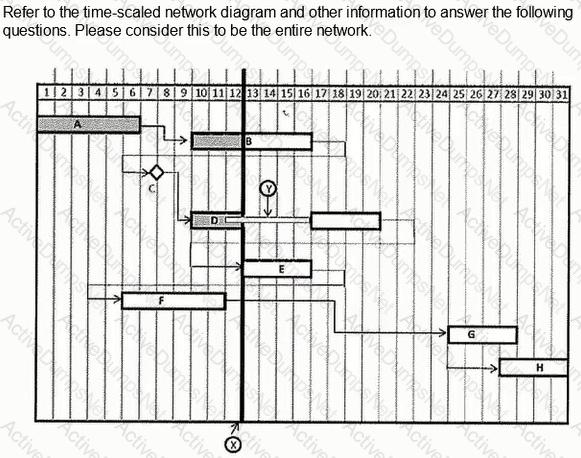
Under which circumstance should one perform resource-leveling calculations?
Using the "normal" schedule, given Activity 3001 and the relationship with Activity 4001, what is indicated?
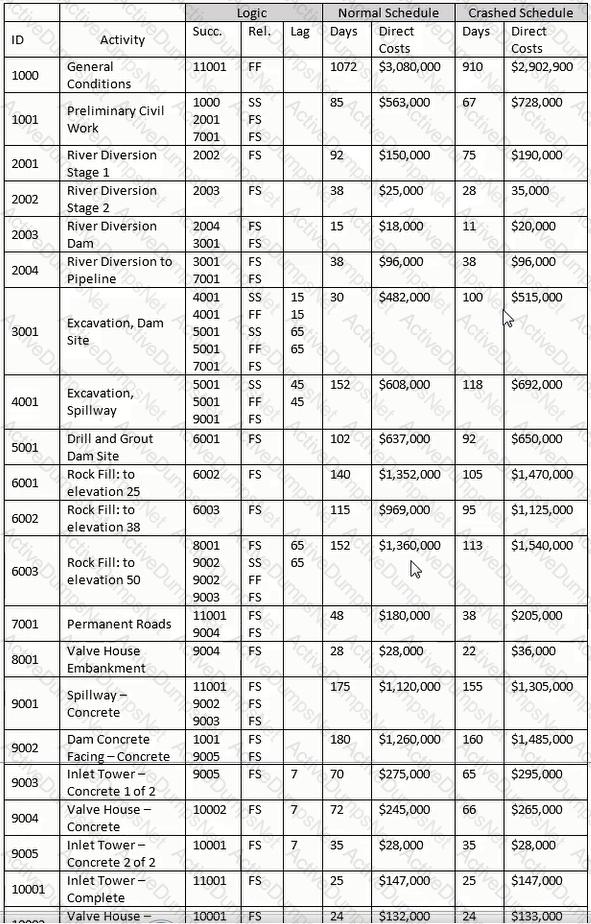
All the following describe the critical path of a schedule EXCEPT: